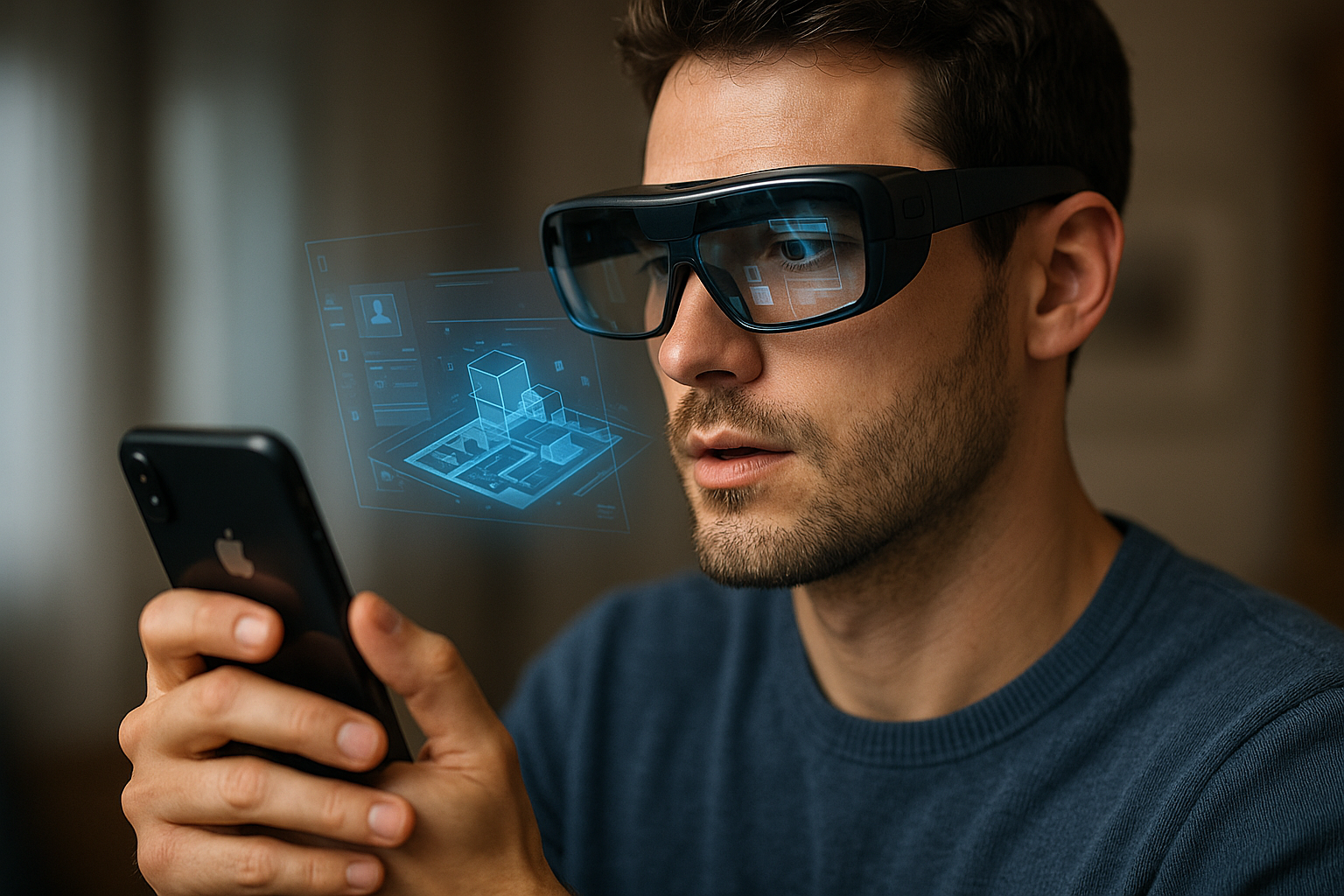The Intriguing Phenomenon of Augmented Reality (AR) in Everyday Tech
Peering through the lens of augmented reality (AR) technology, the line between our physical world and the virtual one is becoming increasingly blurred. It's a fascinating tech trend that's weaving its way into our day-to-day lives, making it more interactive and immersive.

Delving into AR: From Science Fiction to Reality
The concept of AR isn’t a new one. In the 20th century, it was a staple in science fiction literature and films, presented as a far-fetched idea that could only exist in the distant future. However, this seemingly abstract concept began to materialize into a tangible reality in the late 1960s, with the creation of the world’s first head-mounted display system for immersive simulation.
Since then, AR technology has seen significant advancements. In the 1990s, it moved from research labs to the commercial sector, with companies developing AR systems for various applications, including aviation, medicine, and entertainment.
AR Today: A New Layer of Interaction
Fast forward to today, and AR has become a key player in the tech arena. It’s no longer confined to specialized fields; instead, it’s permeating everyday life, changing how we interact with the world around us. From smartphone apps that overlay digital information onto real-world images to AR glasses that project virtual objects into our field of vision, AR is revolutionizing our day-to-day experiences.
The iPhone Effect: AR in the Palm of Your Hand
The real game-changer for AR was undoubtedly the advent of smartphones. When Apple introduced ARKit, its AR development platform, with the iOS 11 update in 2017, it turned millions of iPhones into AR-ready devices overnight. This move democratized AR, making it accessible to everyday consumers.
Today, there are numerous AR apps available on the App Store and Google Play, spanning various categories from games and entertainment to education and shopping. They offer an interactive and engaging experience, whether it’s hunting down virtual creatures in the real world a la Pokemon Go or visualizing how furniture will look in your home with IKEA’s AR app.
Pricing and Market Impact of AR
The implementation of AR in smartphones has also made it a cost-effective option for consumers. While standalone AR glasses such as Microsoft’s HoloLens and Magic Leap’s headsets can cost upwards of $2,000, AR apps on smartphones are either free or priced comparatively lower.
The market impact of AR is undeniably substantial. According to a report by Grand View Research, the global AR market size is expected to reach $340.16 billion by 2028, reflecting a compound annual growth rate (CAGR) of 43.8% from 2021 to 2028. This growth can be attributed to the increasing integration of AR in various sectors, including gaming, retail, and healthcare.
The Future of AR
As we gaze into the future, it’s clear that AR holds immense potential. It’s a transformative technology that’s redefining our perception of reality and how we interact with it. With continuous advancements and increasing adoption, AR is set to become an integral part of our digital lives, making our experiences richer and more immersive.
In the end, the trajectory of AR is a testament to the relentless pursuit of innovation in the tech world. It’s a fascinating journey from the realm of science fiction to the palm of our hands, and it’s only just beginning.




